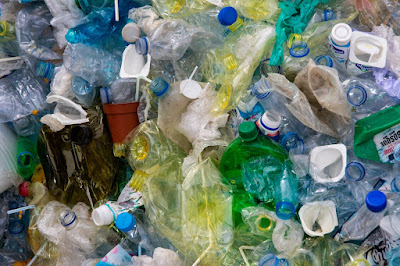Trash-to-Energy: How Our Garbage Can Be Turned into Electricity
Have you ever wondered what happens to the garbage you throw away?
In most cases, it ends up in landfills where it decomposes and emits harmful gases like methane.
However, there's a better way to dispose of our waste that not only reduces the amount of garbage in landfills but also generates electricity.
This process is called "trash-to-energy" and it's a great example of how innovation can turn a problem into a solution.
What is Trash-to-Energy?
Trash-to-energy is a process that involves converting waste into energy through various methods.
- The most common method is incineration, where garbage is burned at high temperatures to produce steam. The steam is then used to power turbines that generate electricity.
- Another method is gasification, where waste is heated in an oxygen-starved environment to produce a gas that can be burned for energy.
- Finally, there's anaerobic digestion, where waste is broken down by microorganisms in the absence of oxygen to produce biogas that can be used for electricity.
Trash-to-energy has several benefits.
First, it reduces the amount of waste in landfills, which reduces the need for new landfills and saves space.
Second, it generates electricity, which reduces our reliance on fossil fuels and helps to mitigate climate change.
Third, it can produce valuable byproducts like ash, which can be used in construction and other industries.
Examples of Trash-to-Energy
Trash-to-energy is not a new concept, and there are several successful examples of it around the world. Here are a few examples:
Oslo, Norway
Oslo, the capital city of Norway, has one of the most successful trash-to-energy programs in the world.
The city's waste-to-energy plant, called Klemetsrud, burns around 400,000 tons of garbage each year, producing enough electricity to power 56,000 homes. The plant also recovers heat from the incineration process and uses it to heat around 13,000 homes in the city.
In addition, the plant recovers metals, plastics, and other materials from the garbage that can be recycled.
Oslo's trash-to-energy program has been so successful that the city has actually had to import garbage from other countries to keep the plant running at full capacity. This has led to some criticism from environmental groups who argue that the city should focus more on reducing waste rather than burning it.
Shenzhen, China
Shenzhen, a city in southern China, has been struggling with a garbage crisis in recent years due to its rapidly growing population. To address this problem, the city has built several waste-to-energy plants that can process up to 20,000 tons of garbage per day.
One of these plants, called the Longgang Waste-to-Energy Plant, is the largest of its kind in the world. It can process up to 5,000 tons of garbage per day and generates 600 million kilowatt-hours of electricity each year. The plant also recovers metals, glass, and other materials from the garbage that can be recycled.
Shenzhen's trash-to-energy program has been so successful that the city has actually reduced the amount of garbage it sends to landfills by 80%. This has helped to free up valuable land that can be used for other purposes.
Hiriya, Israel
Hiriya is a former landfill site located near Tel Aviv, Israel.
In the 1990s, the landfill was closed due to environmental concerns, but in 2002 it was transformed into a trash-to-energy park.
The park includes a waste-to-energy plant that can process up to 2,000 tons of garbage per day and generates 80 million kilowatt-hours of electricity each year.
The park also includes several other facilities, including a recycling center and a composting site. The recycling center processes materials like plastic, metal, and paper, while the composting site turns organic waste into fertilizer.
The Hiriya trash-to-energy park has been a huge success for Israel.
It has reduced the amount of waste sent to landfills by 80%, generated enough electricity to power around 20,000 homes, and created hundreds of jobs.
In addition, the park has become a popular tourist attraction and educational center, where visitors can learn about waste management and environmental sustainability.
Trash-to-energy is a promising solution to our growing waste problem. It not only reduces the amount of waste in landfills but also generates clean energy and valuable byproducts.
As we've seen from the examples above, trash-to-energy can be implemented on a large scale in cities around the world, providing a sustainable solution to waste management.
However, it's important to note that trash-to-energy is not a perfect solution. The process still produces emissions and can have negative impacts on air quality.
In addition, there are concerns about the amount of waste generated by our society and the need for a more circular economy that focuses on reducing, reusing, and recycling materials.
Despite these challenges, trash-to-energy is a step in the right direction towards a more sustainable future. By continuing to innovate and improve our waste management systems, we can create a world where waste is no longer a problem but a valuable resource.
(The image source is https://www.pexels.com/photo/black-metal-current-posts-157827/ )




Comments
Post a Comment